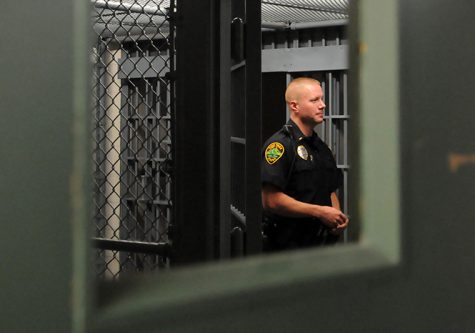President Diacon shares financial update
November 3, 2019
Kent State President Todd Diacon is starting a new practice of releasing updates on the university’s budget and financial health. In an email sent to the Kent State community on Oct. 29, Diacon wrote that he hopes these updates will provide greater transparency and open communication about the university’s budget.
“It is my hope that through enhanced transparency we can create an open dialogue and a better understanding of the financial state of the university,” Diacon said in the email.
The update found a $3.3 million surplus on Kent State’s total budget of $644 million. That surplus was even greater at university auxiliaries, regional campuses and the College of Podiatric Medicine, which saw surpluses of $10.7 million, $3.7 million and $2.2 million respectively.
Tuition and fees account for more than 60 percent of Kent State’s operating revenue. This year, the university generated $400.5 million from tuition and fees, nearly $2.8 million below budgeted expectations. Diacon said this is because of a decline in enrollment, which dropped from 41,891 in fall 2013 to 38,323 in fall 2018.
Short-term investments generated $8.6 million for Kent State. That exceeds the university’s budget of $5.3 million.
Kent State rolled out the University Employee Separation Plan in 2017 to reduce expenditures. Diacon said the plan appears to have worked; the university shelled out $300.3 million in salaries and wages, nearly $2.9 million below budget. Benefits like retirement, healthcare and paid days off totaled $120.8 million, a 7.4 percent decrease from last year. The University Employee Separation Plan, along with changes to Kent State’s benefits plan, helped reduce the level of inflationary growth in healthcare cost, Diacon said.
“We must continue to emphasize our commitment to competitive salaries and benefits, which is dependent on matching staffing levels to the number of enrolled students.” Diacon said in the email.
Kent State also made some improvements to efficiencies, which saved the university $25.6 million this year and more than $75 million since 2014. Diacon said strategic approaches to reducing expenses like refinancing bonds, energy management and group purchasing prevented harsh budget cuts, which would normally come with a decline in enrollment.
Diacon also laid out his plan for tackling the 2020 fiscal year, which has an emphasis on balancing the budget. That plan comes in three parts:
-
Aligning expenses to projected revenue.
-
Funding any new initiatives only through the allocation of existing resources.
-
Effective budget management with a focus on debt maintenance and allocating resources to building maintenance.
“Our careful stewardship allows us to better fund our deferred maintenance needs — even with decreases in enrollment. In previous years, we were forced to limit building maintenance projects to balance our budgets. Such underfunding cannot continue, otherwise we will not be able to continue to make our buildings safe, dry and secure,” Diacon said in the email.
Despite the guarantee to freeze freshman tuition levels for the next four years, a 2 percent surcharge was levied on continuing non-tuition guarantee students and graduate students. Kent Campus is projected to see an enrollment decline of 612 full-time equivalent students next year. The university hopes to offset the impact of tuition increases by increasing the amount of need-based aid by $2 million.
The Board of Trustees approved that balanced budget in September, allocating $659.5 million in revenue and $659.5 million in expenses.
Contact David Williams at [email protected].























